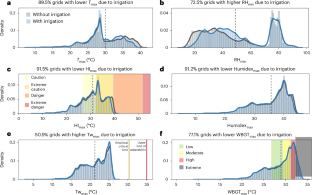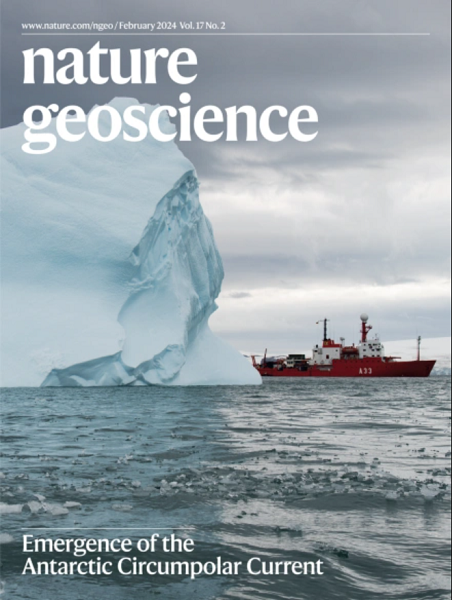Daytime urban heat stress in North America reduced by irrigation
IF 15.7
1区 地球科学
Q1 GEOSCIENCES, MULTIDISCIPLINARY
引用次数: 0
Abstract
There is considerable uncertainty regarding the impact of irrigation on heat stress, partly stemming from the choice of heat stress index. Moreover, existing simulations are at scales that cannot appropriately resolve population centres or clouds and thus the potential for human impacts. Using multi-year convection-permitting and urban-resolving regional climate simulations, we demonstrate that irrigation alleviates summertime heat stress across more than 1,600 urban clusters in North America. This holds true for most physiologically relevant heat stress indices. The impact of irrigation varies by climate zone, with more notable irrigation signals seen for arid urban clusters that are situated near heavily irrigated fields. Through a component attribution framework, we show that irrigation-induced changes in wet-bulb temperature, often used as a moist heat stress proxy in the geosciences, exhibit an opposite sign to the corresponding changes in wet bulb globe temperature—a more complete index for assessing both indoor and outdoor heat risk—across climate zones. In contrast, the local changes in both wet-bulb and wet bulb globe temperature due to urbanization have the same sign. Our results demonstrate a complex relationship between irrigation and heat stress, highlighting the importance of using appropriate heat stress indices when assessing the potential for population-scale human impacts. Convection-permitting regional climate simulations suggest that irrigation reduces daytime urban heat stress in North America.


灌溉减少了北美城市白天的热压力
灌溉对热应激的影响存在相当大的不确定性,部分原因在于热应激指数的选择。此外,现有模拟的尺度无法适当地解决人口中心或云层的问题,因此无法解决人类影响的可能性。利用多年对流允许和城市解决区域气候模拟,我们证明了灌溉缓解了北美1600多个城市群的夏季热应激。这适用于大多数与生理相关的热应激指数。灌溉的影响因气候带而异,位于大量灌溉田地附近的干旱城市群的灌溉信号更为显著。通过成分归因框架,我们发现灌溉引起的湿球温度变化(通常在地球科学中用作湿热应力代理)与湿球温度的相应变化表现出相反的迹象,湿球温度是评估室内和室外热风险的更完整的指标,横跨气候区。相比之下,城市化引起的局部湿球温度和全球湿球温度变化具有相同的标志。我们的研究结果表明了灌溉和热应激之间的复杂关系,强调了在评估人口规模的人类影响潜力时使用适当的热应激指标的重要性。
本文章由计算机程序翻译,如有差异,请以英文原文为准。
求助全文
约1分钟内获得全文
求助全文
来源期刊

Nature Geoscience
地学-地球科学综合
CiteScore
26.70
自引率
1.60%
发文量
187
审稿时长
3.3 months
期刊介绍:
Nature Geoscience is a monthly interdisciplinary journal that gathers top-tier research spanning Earth Sciences and related fields.
The journal covers all geoscience disciplines, including fieldwork, modeling, and theoretical studies.
Topics include atmospheric science, biogeochemistry, climate science, geobiology, geochemistry, geoinformatics, remote sensing, geology, geomagnetism, paleomagnetism, geomorphology, geophysics, glaciology, hydrology, limnology, mineralogy, oceanography, paleontology, paleoclimatology, paleoceanography, petrology, planetary science, seismology, space physics, tectonics, and volcanology.
Nature Geoscience upholds its commitment to publishing significant, high-quality Earth Sciences research through fair, rapid, and rigorous peer review, overseen by a team of full-time professional editors.
 求助内容:
求助内容: 应助结果提醒方式:
应助结果提醒方式:


